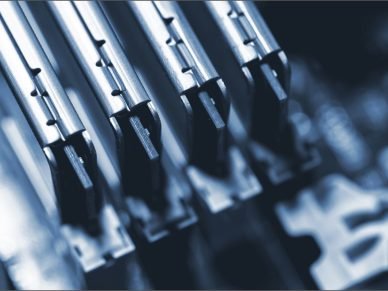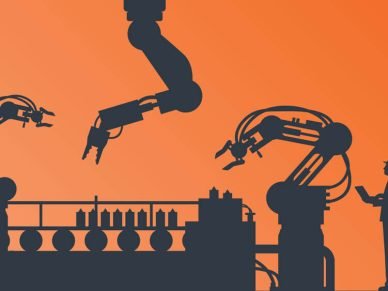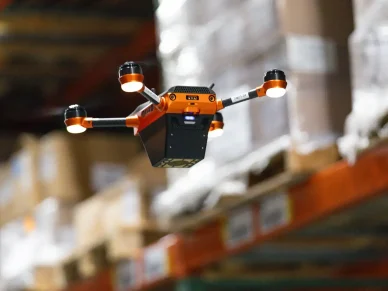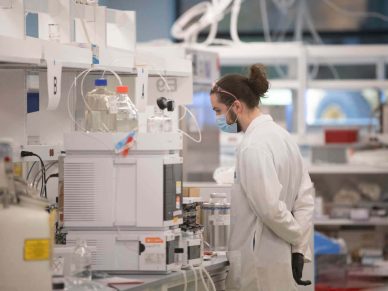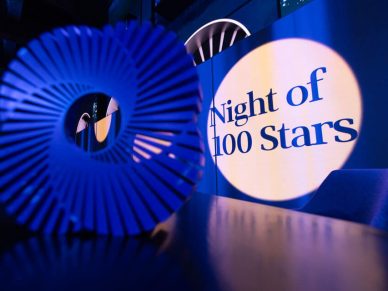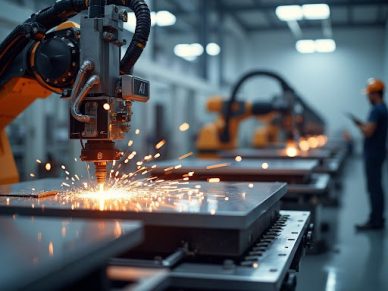He upped the car design game with BMW and Aston Martin. Now Fisker is taking on the electric car market.
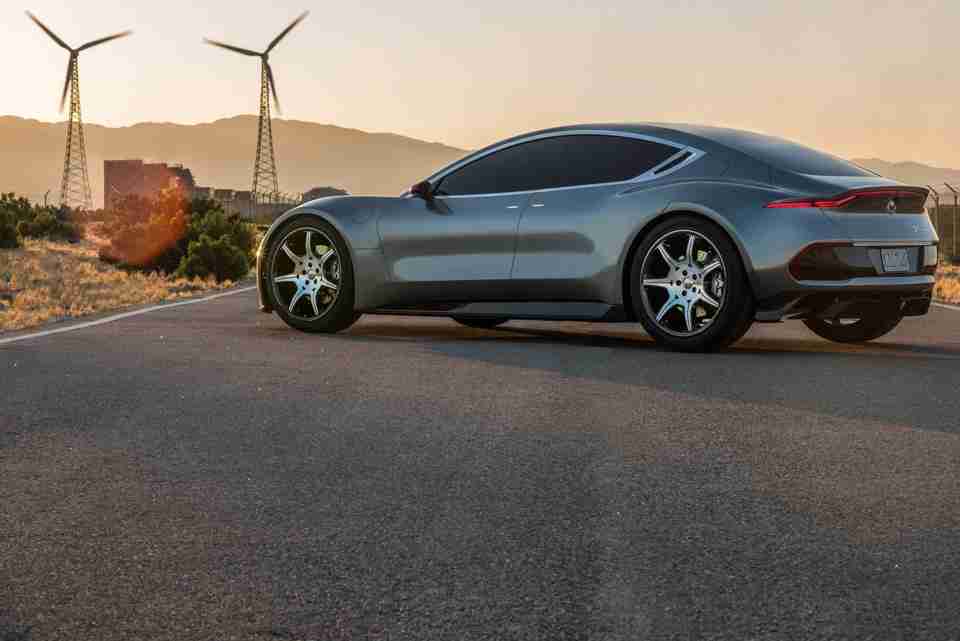 It’s a common-held belief that people who are creative cannot also be analytical and logical. The myth of right brain/left brain dominance still pervades our culture, with people from a young age being told they either fit one category or the other. According to the myth, left brain thinkers are analytical, while right brain thinkers are more creative and subjective.
It’s a common-held belief that people who are creative cannot also be analytical and logical. The myth of right brain/left brain dominance still pervades our culture, with people from a young age being told they either fit one category or the other. According to the myth, left brain thinkers are analytical, while right brain thinkers are more creative and subjective.
Henrik Fisker is proof you can be both.
He’s a difficult man to categorize—creative, artistic, business savvy, forward thinker. If we had to put a label on him, the one that keeps coming to minds is “revolutionary”.
Fisker has designed several of the world’s most beautiful cars. But his careers at BMW and Aston Martin are just the beginning of the impact he has had—and will continue to have—on the automotive industry.
By marrying the creative with the analytical, he’s changed the design game. Now he’s setting his sights on shaking up the electric car market and looking to take on the automobile distribution model, too.
Setting the Wheels in Motion
Fisker was young—eight or nine years old—when he was sitting in his father’s Saab in Denmark. From the backseat, he watched as a silver Maserati sped by.
“It was like a spaceship,” he said. “I had little matchbox cars, but that Maserati opened up what would be my destination in life. That experience got me really excited.”
Later, when everyone was taking notes in school, he was drawing cars. When kids went out to play, he stayed in and continued to draw.
It’s no surprise that he went to school for transportation design at the Art Center College of Design in Vevey Switzerland, where drawing cars were the assignments instead of confined to little doodles in the corner of other work.
He began his 12-year tenure at BMW Technik and Designworks after graduation. While with BMW, Fisker designed the BMW Z8 roadster, as well as the company’s first entrance to the SUV market, the BMW X5.
As Design Director of Aston Martin for four years, Fisker was in charge of production design on the DB9 and the lead designer on the V8 Vantage, which is still in production today.
Fisker’s departure from the Ford Motor Company, which owns Aston Martin, was a shock to the automotive industry. But he was ready to take his career into his own hands.
Fisker Coachbuild, a luxury car custom design firm, was his first stop. With runs of only 150 cars per design, these ultra-exclusive, ultra-rare cars go for a pretty penny. But it was his move into the electric car market that has determined Fisker’s path to his position in the industry today.
Driving Ambition
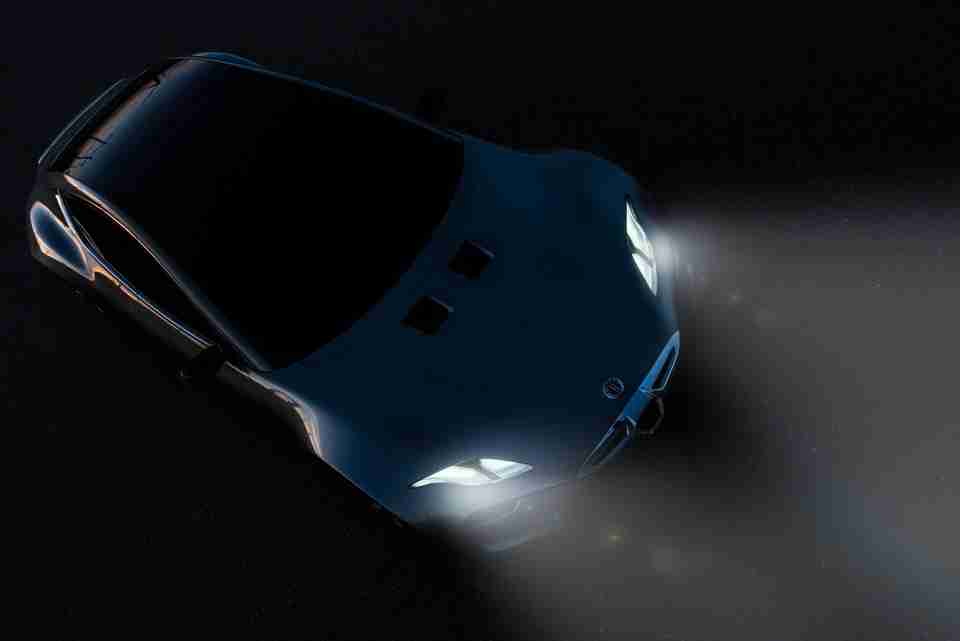 Luxury electric car startup Fisker Automotive began its short tenure in 2007 with the partnership between Fisker and Quantum Technologies. The organization’s first car—the Fisker Karma—was designed with a goal to produce a car that was both beautiful and exciting to drive.
Luxury electric car startup Fisker Automotive began its short tenure in 2007 with the partnership between Fisker and Quantum Technologies. The organization’s first car—the Fisker Karma—was designed with a goal to produce a car that was both beautiful and exciting to drive.
And an award winner: it’s on Time’s 2011 50 Best Inventions list and won the Spark Design and Architecture Award, First Prize at the International Design Awards, and Top Gear Magazine’s Luxury Car of the Year and Car of the Year, 2012.
The company hit a rough patch when its battery supplier recalled all batteries. Fisker resigned from the company in early 2013, and the company shut its doors later that year.
“It was the Wild West,” he recalled. “There were really only two independent electric car companies—us and Tesla. It was the Wild West for battery tech too; not a lot of components were available, which meant a lot more risk for us.
“A lot of suppliers didn’t know how to deliver on what we needed. Fisker Automotive ended up having to deal with recalls, and went bankrupt in large part because of this.”
It would be a few years more before Fisker truly fanned the spark he had for the electric car industry.
In the meantime, he founded HF Design & Technology, a Los Angeles-based design house. Through his design house, Fisker worked on motorcycles and more coach builds, as well as a superyacht.
He joined VL Automotive to make it VLF Automotive in 2016 as a passion project similar to Fisker Coachbuild. Be on the lookout for the Force 1 V10, the first car from the company.
Recharging his Batteries
Fisker Inc. is a new start for the design guru.
“I started up again last year with a clean sheet of paper,” he said. “It’s been an incredible experience. I’ve been able to take what I learned from Fisker Automotive—both what to do and what not to do—and go from there.”
It’s a difficult business, getting a car into production. But Fisker believes what they have is unique and underestimated, probably the best combination you can have.
The goal for Fisker Inc. and its EMotion is to have the longest electric range of any vehicle. With the ability to charge to run 125 miles in nine minutes, Fisker said it was “definitely the longest” capability of any lithium-ion car battery (but more on that later).
“We would like to have the people who sit on the fence try out an electric car,” Fisker said. “The goal is to eventually be able to charge your car as fast as you can fill up a tank of gas.
“No one wants to sit around for 45 minutes to an hour waiting for an 80 percent charge. We have some ideas on how to improve further.”
Electric cars should utilize the best and most advanced technology the industry has to offer, and the EMotion doesn’t disappoint. Fisker shared that the company is intent on incorporating technology in a new way—like replacing the grill on the front of the car with room for autonomous tech for the future.
“There’s no gas engine that needs to be cooled, everything is liquid cooled,” he said. “Instead we looked into how we could include other tech elements like LIDAR for a future autonomous version of the car.”
Taking Things Up a Gear
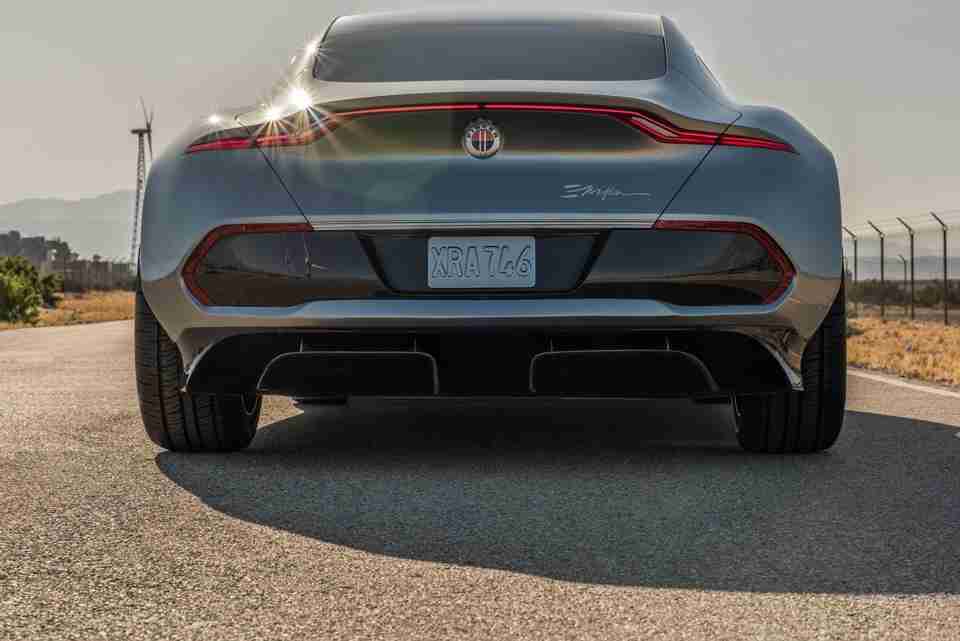 That’s a few years away, but the EMotion of today is still show-stopping.
That’s a few years away, but the EMotion of today is still show-stopping.
“A picture is one thing, but when you see this car in reality, it’s hard to picture what type of market or niche or segment it fits into,” Fisker shared.
“It’s a four door, yet it looks a bit like a sports car. The feeling of interior space is immense.”
With an electric vehicle, Fisker had the opportunity to truly rethink the proportions of the automobile. With a standard gas-powered car, gas tanks and trunks are at the rear of the car, there’s a long hood at the front, and, in general, it’s a boxy design.
But not the EMotion.
“We took it a step further. Do we need this car to look like cars always have?”
Although it adheres to the classic sedan design, Fisker has lengthened the cabin space and shortened the front and rear of the car. The front end of the car is lower, which is good for aerodynamics and allows a wider field of vision out the front windshield.
“The EMotion redefines luxury,” said Fisker. “We can’t change traffic patterns, but we can make it so that you enjoy your car, even in gridlock.”
The EMotion will be manufactured in small runs, allowing Fisker Inc. to pursue low-volume tooling strategies. Once he establishes a foothold in the electric car industry, the company can apply more funds to higher-volume, less expensive vehicles.
For now, though, complete luxury and energy efficiency is the goal.
“There’s a reason it’s called the EMotion. We’re emphasizing the emotional side of car ownership. We’re connecting the consumer with the attractiveness of the vehicle. We’re creating the future of the automobile.”
Battery Life
When Fisker first founded Fisker Inc., the research on graphene batteries was promising. Graphene-enhanced lithium ion battery—graphene supercapacitors—utilize the thinnest and strongest material so far discovered. Electrons move faster through graphene than any other material, meaning it can charge a battery much faster.
Fisker touted the graphene supercapacitors for about a year, even establishing a battery division—Fisker Nanotech—to research and produce a lower-cost option. However, consumers will have to wait for the next entrance to the electric car market from Fisker Inc. for this tech.
“Graphene batteries have a lot of advantages,” he shared, “but we don’t feel as though the technology will be ready for the initial launch. We will continue to research it. We’re using the material elsewhere in the car, but you’ll have to find out where later.”
Instead, Fisker will use nickel-manganese-cobalt type lithium-ion batteries. There are three elements to this proprietary battery pack solution that guarantee their performance for the 400 miles Fisker requires from his electric cars.
First, the EMotion will have an energy-dense battery pack. The density of each cell will be far greater than most electric car batteries on the market. Second, the battery pack is larger in terms of the physical space on the axle. This means that more batteries can be used, regardless of the type of battery Fisker Inc. is using.
“As an electric car company, we need to understand the battery all the way into the battery chemistry,” Fisker stated. “It’s a closer step to mass market adoption, and because of that knowledge, will create ease of use for electric car owners.”
Fisker Inc. is still pursuing other battery tech like solid-state batteries. Some of the tech, Fisker shared, will be a big game changer. Think zero flammability, flexible, energy dense, and low-cost options.
Distribution and Service Overdrive
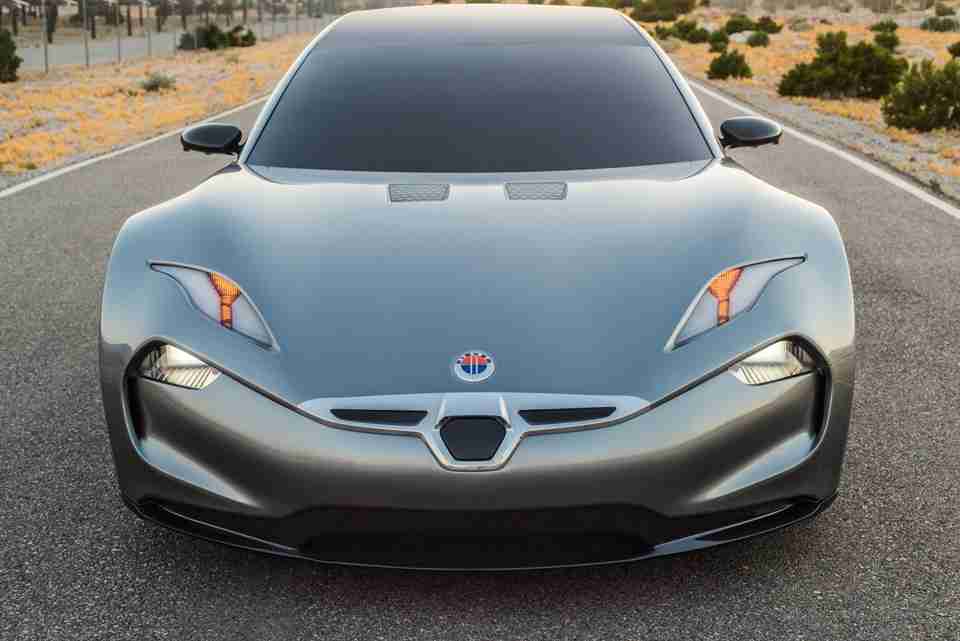 Singularly changed the luxury car design game: check. Advanced the design and efficiency of the electric car market: also check. Now, Fisker is concentrating on revolutionizing auto distribution and service models.
Singularly changed the luxury car design game: check. Advanced the design and efficiency of the electric car market: also check. Now, Fisker is concentrating on revolutionizing auto distribution and service models.
In terms of buying a car, Fisker Inc. will move away from dealerships and instead offer “experience centers” in high-traffic areas. You’ll purchase your car online through an Amazon-like service.
He wants to upgrade the owner experience beyond how the car looks, feels, and runs, too.
“A customer should never have to worry about service. So, our customers will never have to take their own car to get service,” he said.
Instead, the tech in the car will communicate with a certified auto shop and the owner. The shop will pick up the car at your home or office, deposit a loan car if you need it, and bring your car back at the end of its service.
“When it’s ready for you, you’ll even get a message detailing where your car is parked if they can’t get the same parking spot,” Fisker shared.
Driven to Succeed
Don’t expect Fisker to slow down after the full release of the EMotion. Battery and electric car tech is moving a mile a minute, giving automakers the opportunity to continuously improve their offerings. Between the battery development, new designs, and working on his other ventures, Fisker has other goals he’d like to pursue.
“I haven’t been fortunate to design an affordable car,” he said. “I’d love to design a car that a lot more people have access to, but one that still has my design philosophy.”
Until then, Fisker will take his right-brain creativity and left-brain logic to continue to produce show-stopping designs and cars through Fisker Inc.
“We have a very clear and solid business plan. We’re going to be a large international player. It’s going to take us a few years to get there, but there’s a lot of opportunity.
“Electric vehicles are disruption,” he said. “We want to disrupt further: the way you own, the way you get your vehicle, the way you drive. We want to be a part of that.”
